This page is packed with amazing dolphin facts, answering a range of questions about dolphins: just how smart are dolphins? What do dolphins eat? Where do they live? How many types of dolphins are there? Are Killer whales dolphins? Is a dolphin a mammal? What are the most endangered dolphins out there, and why are they at risk?
The dolphin is one of the world’s most fascinating underwater mammals.
You will find some pictures of dolphins here on this page, but to find a lot more pictures, free for you to use, you can visit this page on Clipartqueen.
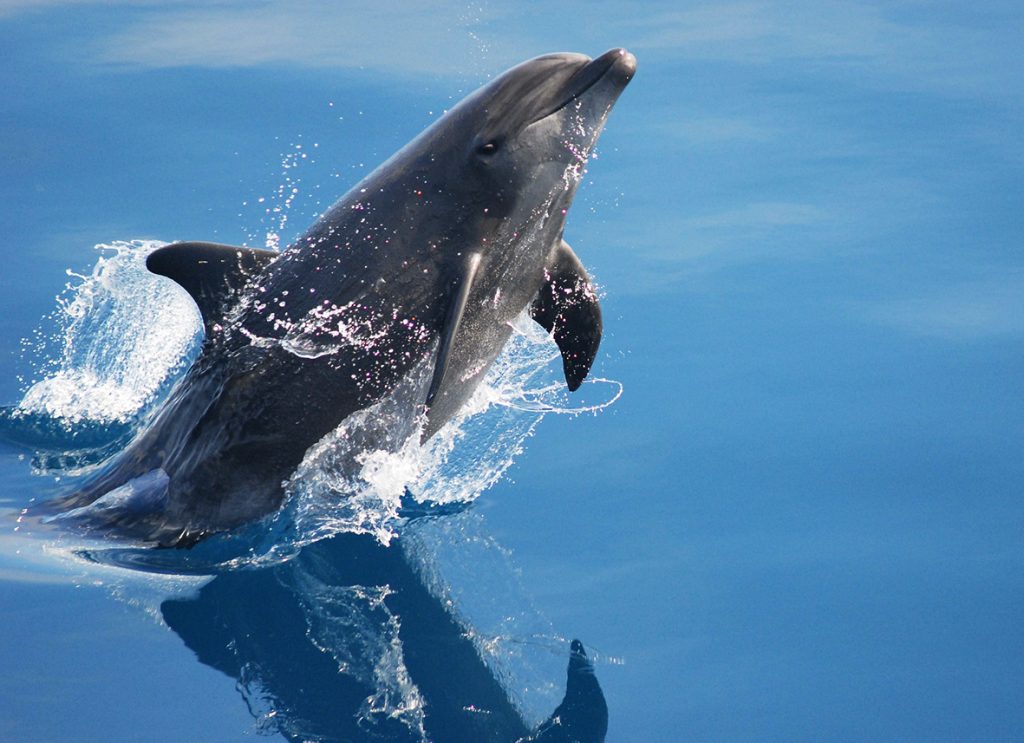
Amazing Facts about Dolphins
Before we go to the basics, let’s look at a some of the amazing fact about dolphin behavior, a couple of them actually quite recent discovered:
Dolphins Play Ball:
Often, when in peaceful surroundings, there are two experienced dolphins on guard, and then the rest of the dolphin pod can relax.
And how do they pass time, these dolphins?
Very similar to a lot of humans, it seems. They play ball!
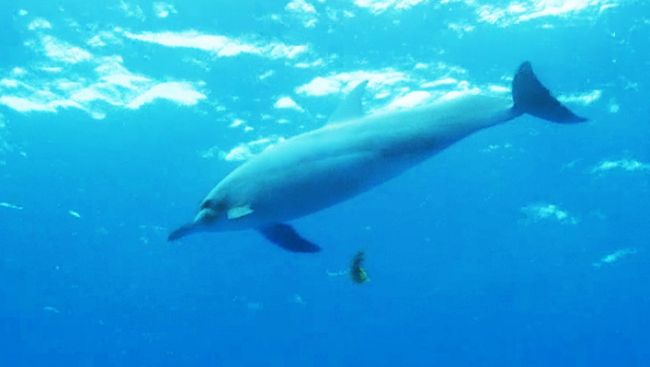
A dolphin grabs a piece of seaweed, and swims with it by using the flippers to hold it – then it releases it and another dolphin catches the seaweed with it’s mouth or flipper and swims on with the seaweed by the flipper.
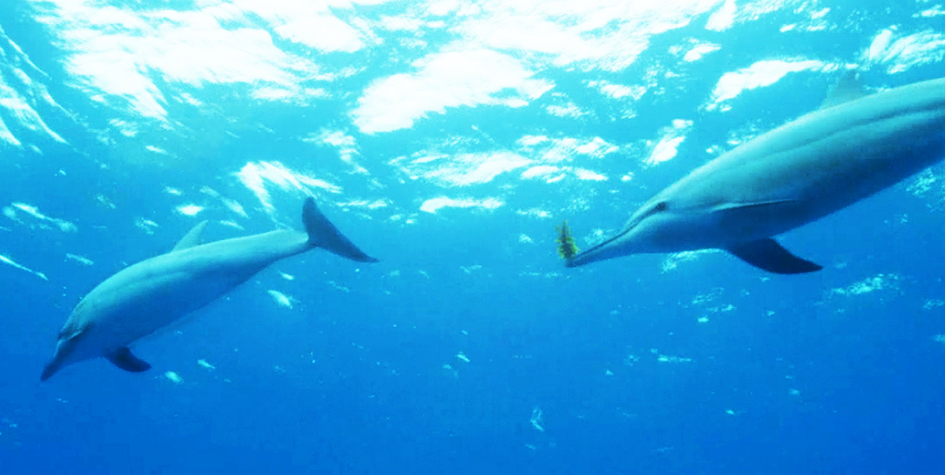
Different Kinds of Dolphins Hunt Together:
As I mention below, dolphin pods are known for their clever tactics when it comes to hunting, either driving their prey towards shallow water where its easy to pick off fish, or circling an entire school of fish while a few dolphins at a time swim to take their pick of trapped fish.
Now divers have seen lots of examples where two-three pods of different kinds of dolphin hunt together.
Here is a picture of a shoal of fish, driven together by 3 pods of dolphins, just before they start eating the fish:
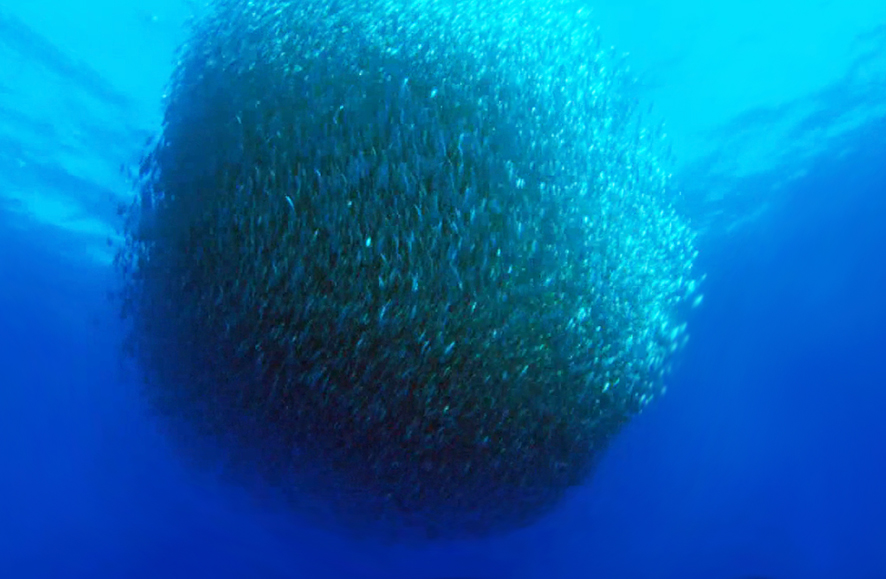
Basic Facts About Dolphins
Let’s come back to answering some of the most common questions about dolphins and look at some of the most interesting dolphin facts.
Is a dolphin a mammal, or are dolphins fish?
They are mammals.
So what’s the difference between a fish and a mammal?
Like humans, dolphins give birth to live young (they don’t lay eggs) and they feed their young with milk. They also don’t have gills which would allow them to breathe underwater, so they have to come up to the surface to take in air through a blowhole.
How long are dolphins?
Most dolphins can grow to around 6-13 feet long (about 1.8 to 4 meters).
How much does an average dolphin weigh?
Dolphins can weigh up to 1400 pounds (about 650 kilograms), but the average is around 500 pounds (about 225 kilograms). Weight can differ a lot from species to species.
How long do dolphins live?
An average lifespan for a dolphin is about 20 years, but again this depends a lot on species with some dolphins only averaging around 12 years and others living up to 50 plus years.
How fast can dolphins swim?
Top speed for a dolphin is around 25 miles an hour (about 40 kilometers an hour).
Are dolphins intelligent?
Yes, extremely. Many scientists agree that they are the smartest animals on the planet after humans.
Dolphin Behavior
One of the most interesting things about dolphins is: How do dolphins sleep?
The way dolphins sleep is quite hard for humans to understand, because when we think of sleep we think of our whole brain shutting off for a few hours. That’s not what happens with a dolphins, because a dolphins brain is only ever half asleep.
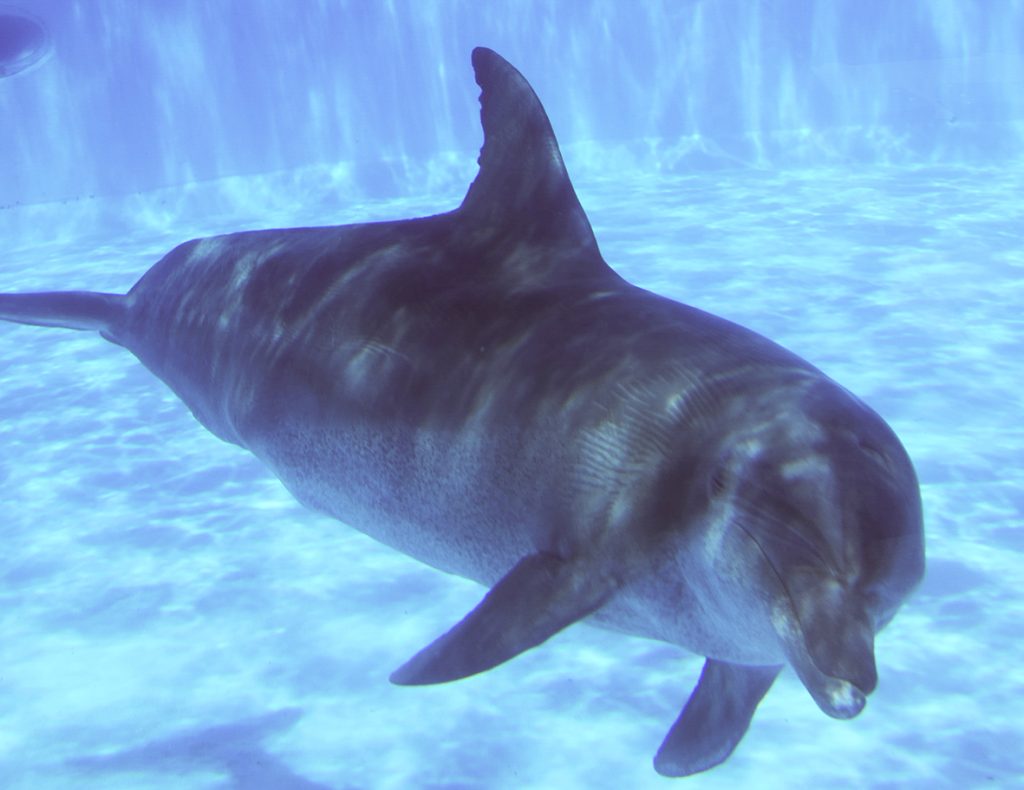
The big difference here is that humans don’t have to think about breathing – dolphins do. Every time they need to breathe they have to go to the surface and take a breath on purpose.
So when dolphins ‘sleep,’ they actually just swim along near the water’s surface with half their brain still operating, taking breaths from time to time. If they were to ‘sleep’ by ‘switching off’ altogether the way humans do, they would actually drown!
Dolphins are well known for some of their unique behaviors. Amongst the strange behaviors dolphins have been known to display are their attempts to help humans in trouble, even going as far as to fight off Great White Sharks who are attacking a human!
And of course, dolphins are also well known for their incredible ability to learn new behaviors. This is well known to anyone who has visited a place like SeaWorld.

In the wild, dolphins have plenty of interesting behaviors that they display even on a day to day basis.
For starters, they are known to use tools – which is quite amazing, because many people tend to think using tools is what sets humans apart from the animal kingdom.
In actual fact, both otters and some types of dolphins have been observed using tools.
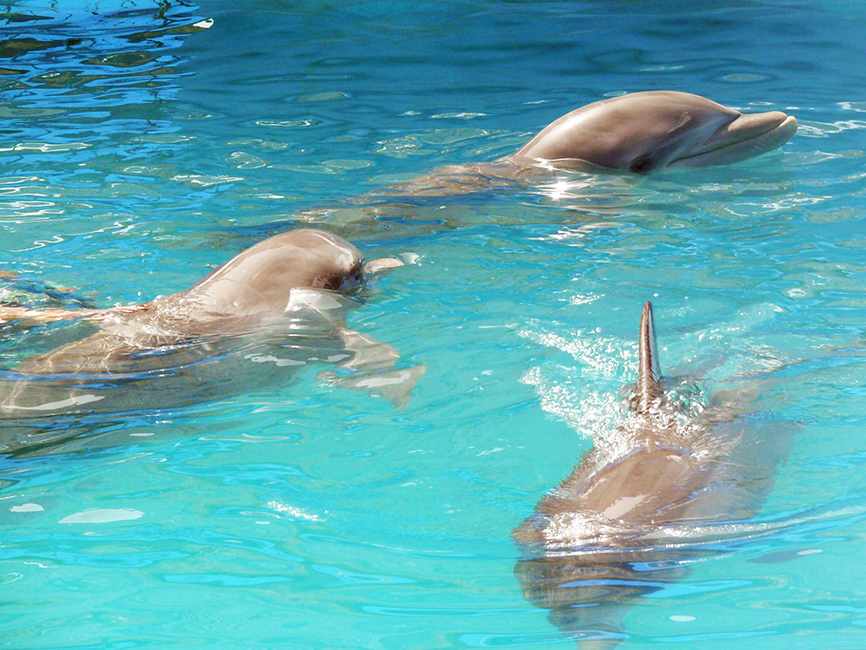
In the case of dolphins, they have been known to find a marine sponge, put it on their nose and use it as a kind of protector when they are digging around for food on the seabed. This is kind of similar to a person wearing gardening gloves when digging up some vegetables.
Researchers have made some even more fascinating observations that link dolphins with humans: it appears dolphins can develop their own culture, just like people can. In this sense, culture is a set of behaviors that dolphins learn from other dolphins in their social group, like the use of the sponge as a ‘glove’ just mentioned.
Dolphin Senses
Dolphins usually hang out fairly close to the surface of the water. It’s unusual for a dolphin to go any lower than about 250 meters (about 800 feet) below the water’s surface). This, of course, is because dolphins breathe air.
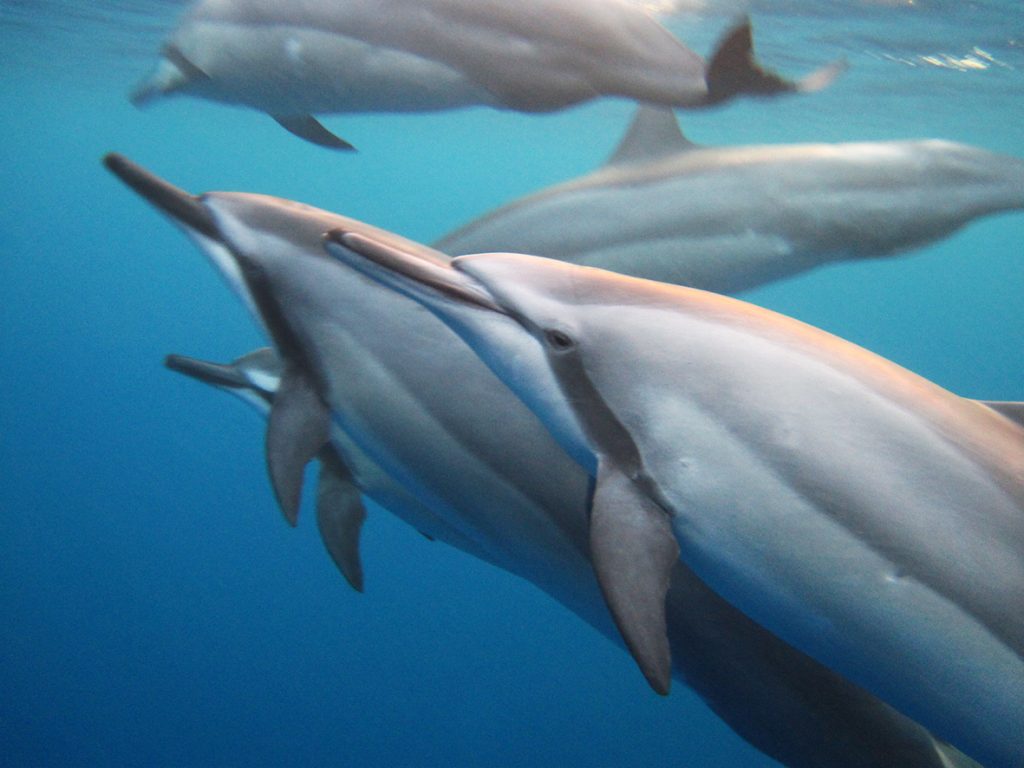
This fact is important when it comes to looking at how a dolphin’s senses work. Let’s look at some of the interesting facts about the ways dolphins see the world (and touch, taste, hear and smell it).
Dolphin Sense of Smell: The dolphin’s sense of smell is quite weak – in fact some dolphin researchers think they don’t have any sense of smell at all. They rely a lot more on hearing and sight to hunt their prey (as opposed to predators like sharks, which rely very heavily on their sense of smell to find wounded fish in the water).
Dolphin Sense of Sight: Dolphins have fairly good eyesight compared to many other forms of marine wildlife. Although their eyes have evolved to see best when they’re underwater, they are also capable of seeing well out of the water. This is partly what gives them the ability to perform complicated tricks with their trainers at places like SeaWorld – leaping out of the water and grabbing a fish from mid-air, for instance. Their color vision is not very good, but they are capable of focusing on objects and seeing movement.
Dolphin Sense of Hearing: The dolphin’s sense of hearing is the one it relies on most.
The dolphin ‘hears’ the world around it in the same way humans see the world with our eyes. The extremely well developed sense of hearing dolphins have works along with their echolocation abilities to help them create a mental map of the ocean around them. Echolocation is explained in great detail below.
Dolphin Sense of Touch: Dolphins are quite sensitive to touch on their faces, which is why they’re often seen enjoying ‘petting’ from a trainer at a marine park.
They seem to enjoy affection from their trainers in the same way dogs like to be petted by their owners. Their sense of touch is a part of what makes them able to bond so strongly with humans.
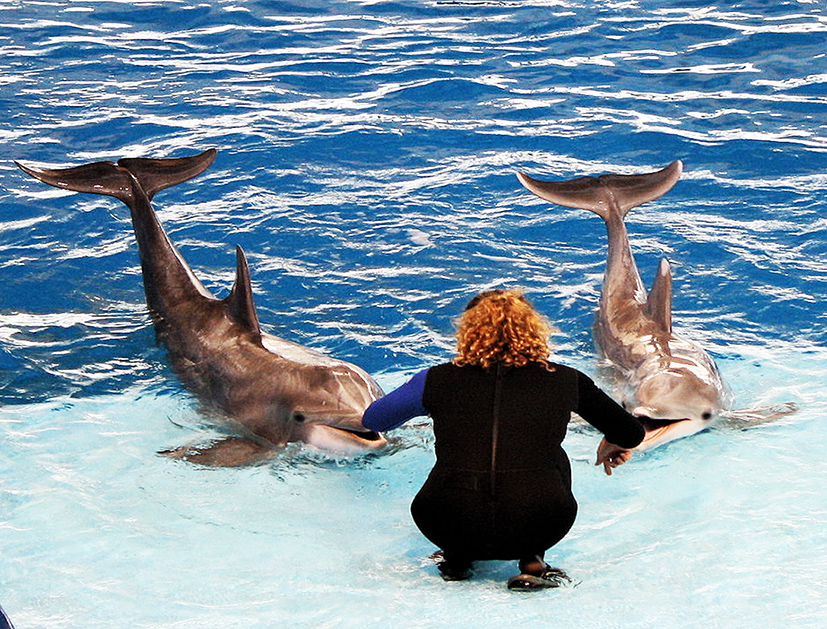
Dolphin Sense of Taste: The dolphin’s sense of taste is not very well understood by researchers, because taste is one of the hardest senses to study in another animal (it’s easy to do tests to see if a dolphin can see or hear something – it’s a lot harder to ask a dolphin what something tastes like!).
However, dolphins do have taste buds and they can tell the difference between different fish species, preferring some fish over others (the same way a dog or cat might refuse to eat a certain type of pet food).
Dolphin Facts: What Do Dolphins Eat?
The variety of food sources eaten by dolphins can differ a lot from species to species. This is because different species are found in different parts of the world, where different sea life are available for feeding on.
Generally, dolphins eat fish and squid.
The exact types of fish and squid they eat will depend what type of dolphin you’re looking at and where in the world you are. Common fish types that end up as dolphin dinner include cod and mackerel.
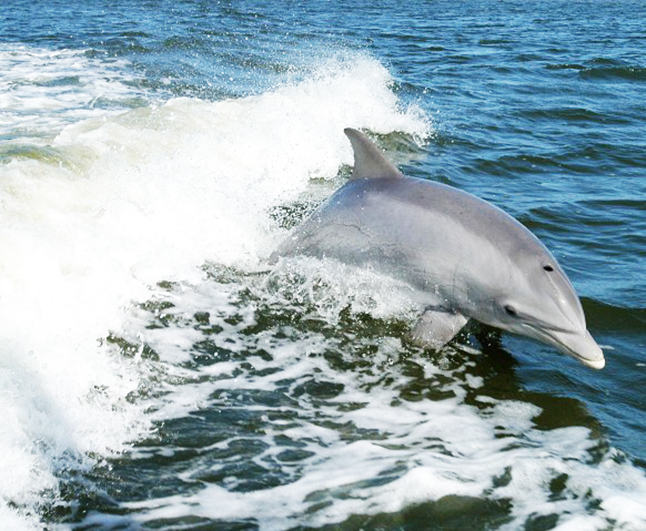
Dolphins eat about 5% to 10% of their body weight every day, which usually adds up to about 22 to 55 pounds (10 to 25 kg) worth of fish – but for some bigger dolphin species that can mean up to about 145 pounds (65 kilograms) worth of food in a single day.
Dolphins move and live together in a group known as a ‘pod.’
Dolphin pods are also known for their clever tactics when it comes to hunting, either driving their prey towards shallow water where its easy to pick off fish, or circling an entire school of fish while a few dolphins swim down from above and take their pick of trapped fish.
Dolphin Facts: Where Do Dolphins Live?
Obviously most dolphins live in the ocean, but what parts of the world can they be found in?
The most well-known dolphin species is the bottle-nose dolphin – this is the ‘Flipper’ dolphin and the species which is most commonly seen in aquatic parks like SeaWorld.
The bottle-nose dolphin is found all over the world, except near the poles where the water is too cold. (Although killer whales thrive in these cold temperatures).
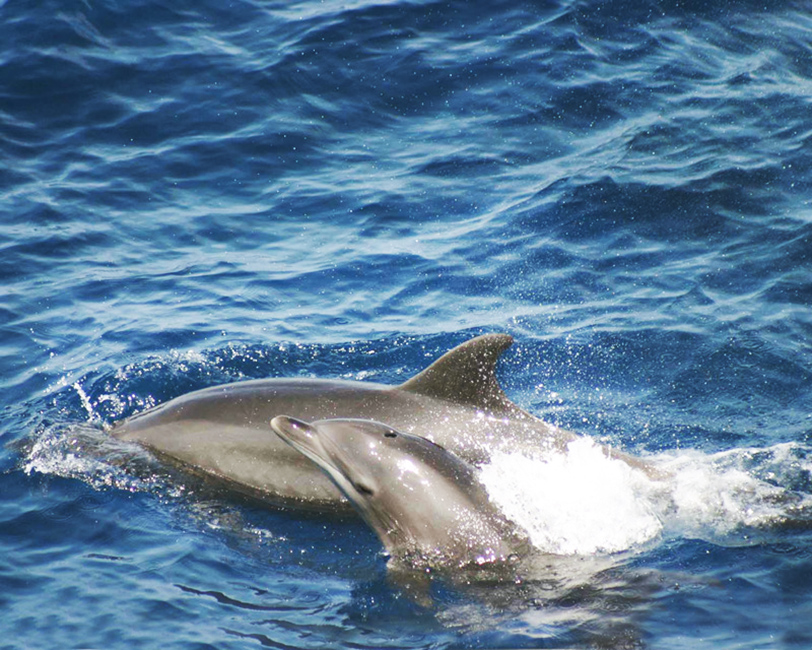
Another common dolphin species is the Atlantic spotted dolphin, which is widespread in the Atlantic Ocean.
Then there are many less common species of dolphin, like the Hector’s dolphin which is found around the coastline of New Zealand in the South Pacific Ocean.
There are also few species of dolphin which live in rivers, most notably the Amazon River and until recently the Yangtze River in China.
Echolocation
Echolocation is particularly amazing because it’s so much more than a way to communicate with other dolphins.
It’s actually a way for dolphins to ‘see’ and map the ocean around them using sound.
This is exactly the same method bats use to fly in the dark. They put out a sound which bounces off everything around them.
The dolphins ears can then ‘hear the shape’ of everything in the ocean around them – they know where the ocean floor is, where other fish are nearby, where other dolphins are an so on.
Types of Dolphins
The most common dolphin species in the world is the bottle-nose dolphin.
This is the one most people are familiar with, but there are a total of 31 other types of dolphins that live in the sea, as well as 3 surviving river dolphin species.
There are also 6 different types of porpoise.
Many people think dolphins and porpoises are the same thing. This isn’t the case though.
Difference between Dolphin and Porpoise:
Dolphins and porpoises are different, but they both belong to the same ‘family’ of aquatic mammals called cetaceans.
Porpoises tend to be shorter than dolphins and have rounder, wider bodies.
Whales also belong to the family of cetaceans.
River Dolphins:
- The Amazon River Dolphin (Boto)
- The South Asian River Dolphin (split into the two subspecies of the Indus River Dolphin and the Ganges River Dolphin)
- The Franciscana River Dolphin
Ocean Dolphins:
- The Bottle-nose Dolphin
- The Peale’s Dolphin
- The Hector’s Dolphin
- The Risso’c Dolphin
- The Pantropical Dolphin
- The Frasier’s Dolphin
- The Dusky Dolphin
- The Commerson’s Dolphin
- The False Killer Whale
- The Heaviside’s Dolphin
- The Hourglass Dolphin
- The Long-finned Pilot Whale
- The Orca
- The White-beaked Dolphin
- The Short-finned Pilot Whale
- The Striped Dolphin
- The Pygmy Killer Whale
- The Irrawaddy Dolphin
- The Clymene Dolphin
- The Black Dolphin
- The Pacific White-sided Dolphin
- The Short-beaked Common Dolphin
- The Rough Toothed Dolphin
- The Southern Right-Whale Dolphin
- The Atlantic Hump-backed Dolphin
- The Atlantic Spotted Dolphin
- The Atlantic White-sided Dolphin
- The Long-beaked Common Dolphin
- The Long-snouted Spinner Dolphin
- The Indo-Pacific Hump Back
- The Northern Right Whale Dolphin
You can read a lot more on Wikipedia.
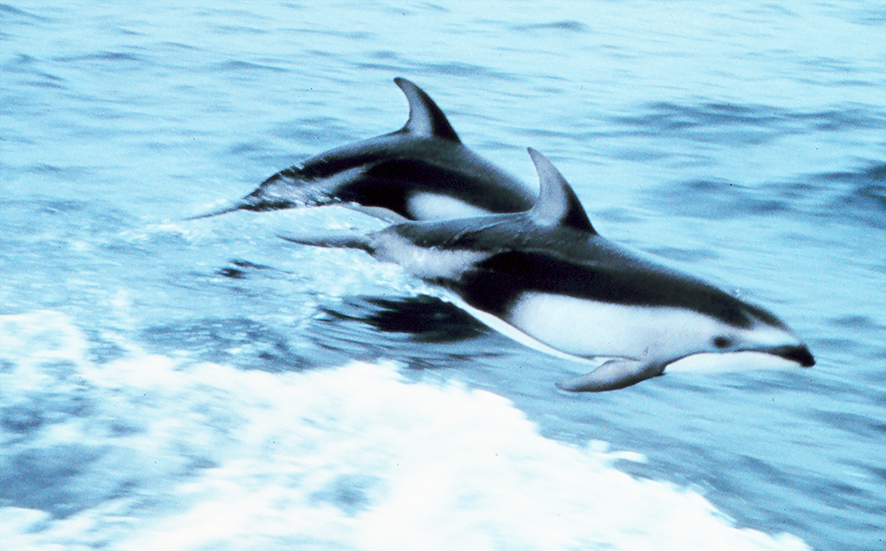
Porpoises:
The Finless Porpoise
The Harbor Porpoise
The Vaquita Porpoise
The Dall’s Porpoise
The Spectacled Porpoise
The Burmeister’s Porpoise
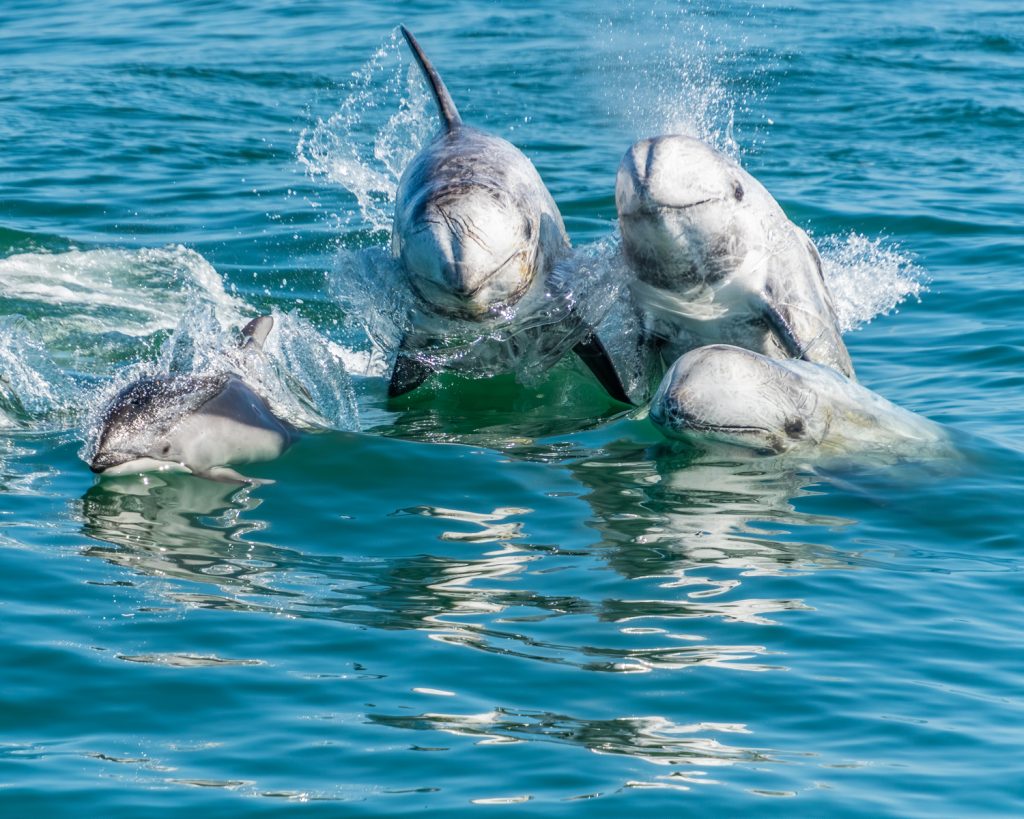
Dolphin Facts: Endangered Dolphins
First of all – what does endangered really mean?
We all know it means there’s a chance of the animal going extinct, but how do scientists decide what is endangered and what isn’t?
Well, animals are called ‘endangered in a couple of cases.
One is when their numbers are so low that the species could easily reach the point where it can’t keep its population growing. For example, if there are only 500 of an animal left and they get struck by a disease, their chances of recovering as a species are very low.
Animals may also be classed as ‘endangered’ if a big change in the environment is going to make it hard for them to survive in the future – even if there are many of them still around now.
Unfortunately many species of dolphins are now at risk of extinction, largely because of hunting by humans.
It’s not only hunting of dolphins themselves that cause the problem. Too much fishing by humans has led to a decline in the numbers of certain fish that some dolphin species usually feed on – as a result, dolphins are dying off because they simply can’t find food.
The Hector’s dolphin of New Zealand is one of these endangered dolphin species. There is only around 25% as many Hector’s dolphins today as existed in 1970. There are only about 8000 Hector’s dolphins still left in the world. Hector’s dolphins are some of the smallest dolphins on Earth.
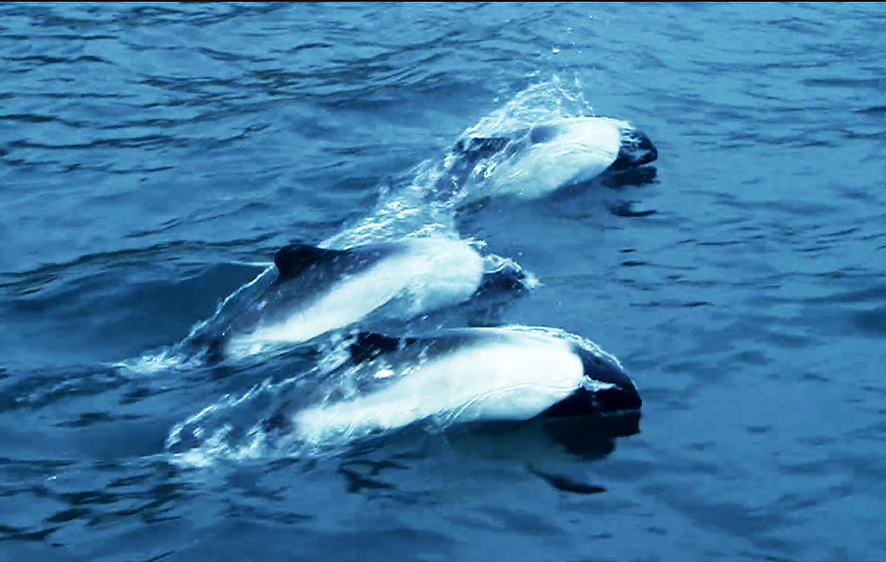
The Irrawaddy dolphin is another endangered species. This species is a particularly strange looking type of dolphin with a round face and not much in the way of a snout. Their faces don’t look much like the ‘cute’ appearance we are used to with Bottle-nosed dolphins. There are about 7000 Irrawaddy dolphins left in the world. They live around the coasts of Southeast Asia. One of the strangest things about these dolphins is that they’re found both around the coastline in the sea and in freshwater rivers.
One of the saddest dolphin facts to learn is that in 2006 the world officially lost a jewel of the animal kingdom when the Chinese river dolphin was confirmed as being extinct. The incredibly high level of pollution in the Yangtze River where the dolphins used to lived is seen as being one of the biggest factors contributing to the disappearance of the dolphin species.
The Indus River dolphin is also on the verge of extinction. Like the Irrawaddy these dolphins are very unusual compared to the dolphins we see on TV and in movies, but for a very different reason: they are practically blind, which is why they’re often called the Blind River Dolphin. Current estimates of Indus river dolphin numbers have put them at only about 800-1200 in the wild – but thankfully that number seems to be going up rather than down.
The Amazon River dolphin is also classified as being vulnerable, although it’s not yet considered endangered.
Many other dolphins fall into the group labelled ‘data deficient.’
What that means is that researchers don’t really know how many of these dolphins are left. It’s likely that quite a few ‘data deficient’ species of dolphin are actually endangered.
The Pink River Dolphins of the Amazon
One of the most fascinating dolphin species in the world is the river dolphin found in the Amazon River in South America.
One of the most amazing things about these dolphins is their color – the dolphins are pink, which led to a string of myths and legends about mermaids in the river arising when the first Europeans to arrive in South America caught glimpses of what looked like half-human half-fish creatures swimming through the water.
But even before the arrival of Europeans in the area, the local people had stories about the dolphins being shapeshifters – turning into humans at night when no one was around to see them!
Dolphin Facts: Dolphin Enemies
The main predator of dolphins found under the sea is the shark.
Killer whales (which are dolphins) have even been known to eat smaller dolphin species. For the most part through, sharks steer clear of dolphins if there’s an easier meal available.
Sadly, as you can see from the story of the Chinese river dolphin above, humans are also a threat to the dolphin – in fact, we’re their biggest threat by far. Not just through the pollution of their natural habitat in the rivers and oceans, but also in the form of dolphins being hunted in countries like Japan. Dolphins are hunted for their meat and are also captured to become performers at amusement parks.
Dolphins are also at high risk of becoming ‘by-catch’ – that is, getting caught in fishermen’s nets when they are trying to catch other types of marine life, like tuna.
This is the biggest threat to dolphins at the moment, according to the World Wildlife Fund.
In the case of the Indus river dolphin, it was the building of dams and blocking off of waterways that largely led to their decline in numbers, because they were unable to get to their usual food sources.
Killer Whales: Are They Really Dolphins?
Yes – the orca, or killer whale, is a species of dolphin.
It is the largest dolphin species.
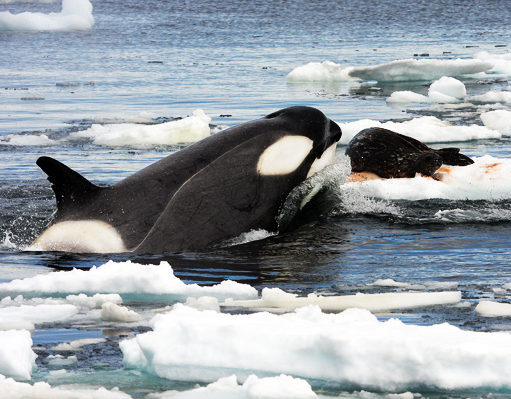
The ‘killer whale’ name comes from the fact that orcas are known to eat other mammals, like sea lions. They also eat large bird life such as penguins. Their teeth can grow up to 4 inches long (about 10 centimeters). They weigh up to six tons and can grow up to a whopping 32 feet long (almost 10 meters!).
Killer whales stick together in family-based pods of about 40.
Looking at the list of dolphin species above you will have noticed the False Killer Whale and the Pygmy Killer Whale as well.
The False Killer Whale is quite similar to the orca in shape and size, but it doesn’t have the same distinct black and white markings.
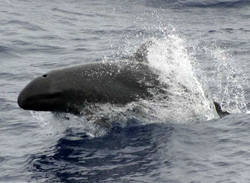
The Pygmy Killer Whale, as you might be able to guess from the name, is like a smaller version of the orca.
It’s estimated that there’s about 40,000 of them in the Pacific Ocean, but they are found in oceans all over the world so the total number is probably a lot higher than that.
Hopefully you enjoyed reading these dolphin facts and learning all about one of the world’s most amazing creatures!